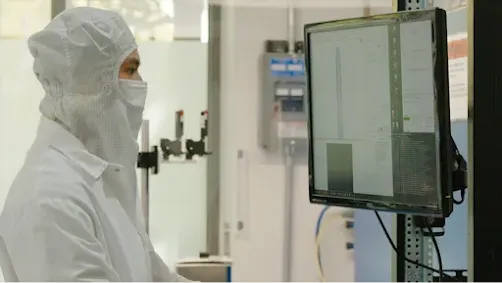Neuralink’s long-term goal is to develop a comprehensive input/output platform capable of interfacing with the human brain. Since their 2022 Show & Tell, the company has been dedicated to building a device to interface with different brain regions to address severe brain and central nervous system conditions. The initial focus is on restoring digital autonomy to individuals with quadriplegia caused by spinal cord injury (SCI) or amyotrophic lateral sclerosis (ALS), a capability they refer to as "Telepathy."
The N1 Implant and Its Supporting Technology
The centerpiece of Neuralink's technology is the N1 Implant, an intracortical BCI implant designed to record neural activity using 1,024 electrodes spread across 64 flexible leads, or “threads.” These threads, thinner than a human hair, are designed to reduce participant risk and enhance the device's utility. Due to their delicate nature, Neuralink developed the R1 Robot, a surgical robot capable of accurately inserting these threads into the cortex.
The N1 Implant processes neural signals and wirelessly transmits this data to an external device, translating the signals into actions such as moving a cursor on a computer screen. The implant is powered by an onboard battery that is wirelessly recharged, allowing it to be implanted discreetly under the scalp without the need for external connectors.
Launching the PRIME Study
The development of the PRIME Study (Precise Robotically Implanted Brain-Computer Interface) involved extensive preparation, including building in-house microfabrication capabilities, developing custom hardware and software testing systems, and establishing high standards for animal care in device testing. Neuralink received FDA approval in May 2023 to start their first-in-human clinical trial and began recruiting participants in September 2023. This trial aims to evaluate the safety of the implant and the surgical robot while assessing the initial functionality of the BCI for enabling individuals with quadriplegia to control external devices using their thoughts.
Successful First Human Implantation
The first human implantation was successfully performed at the Barrow Neurological Institute in Phoenix, Arizona. The surgery went smoothly, and the participant was able to return home the next day with a smooth recovery. Barrow Neurological Institute was chosen for their extensive expertise in managing complex neurological conditions and their commitment to advancing neuroscience.
Dr. Michael T. Lawton, president and CEO of Barrow Neurological Institute, described the operation as a significant engineering achievement and a crucial advancement in neurosurgery. Dr. Francisco A. Ponce, the principal investigator at Barrow for the PRIME Study, emphasized Barrow's dedication to improving patients' quality of life through this groundbreaking research.
Future Directions
The PRIME Study is in its early stages, with plans to provide updates as they continue working with the first participant and recruit additional participants. Neuralink aims to expand their studies to different regions and continuously improve their technologies based on clinical trial insights, aiming to help as many people as possible.
This milestone signifies a significant leap forward in the field of brain-computer interfaces and the potential to transform the lives of individuals with severe neurological impairments.
Source: Neuralink.com












